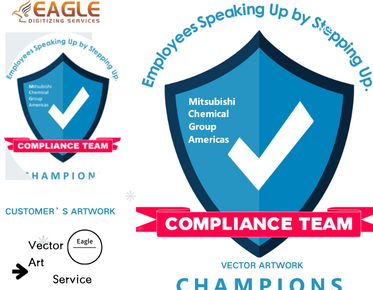Exploring Different Screen Printing Methods and Their Applications
Screen printing is a versatile printing technique widely used for producing vibrant designs on textiles, paper, and various other surfaces. This method of printing has evolved over the years, giving rise to several distinct techniques, each offering unique benefits and applications. In this blog, we delve into the various screen printing methods, exploring how they differ, their advantages, and the contexts where they are best applied.
Traditional Hand Screen Printing
At the core of all screen printing techniques lies traditional hand screen printing. This method involves using a manual process where ink is pressed through a mesh screen using a squeegee. The intricate process enables the creation of detailed and multi-colored designs, making it popular for small batch production and custom apparel. Despite being labor-intensive, hand screen printing is celebrated for its craft-like quality and the ability to produce vibrant colors with excellent opacity on darker fabrics.
Automatic Screen Printing
Advancements in Technology
While traditional hand screen printing relies heavily on manual operations, automatic screen printing introduces automation to increase efficiency. In this method, machines handle the movement of screens and substrate, allowing for higher production speeds and consistency in large-scale operations. Automatic screen printing is ideal for businesses that require the production of large quantities without compromising on quality.
Benefits for Large-Scale Production
Automatic screen printing not only reduces labor costs but also improves print consistency and turnaround time, making it a cost-effective solution for large orders. Businesses specializing in custom t-shirt printing often utilize automatic screen printing to meet high-volume demands with precise control over ink application and registration.
Digital Screen Printing
Innovation Meets Tradition
Combining digital technology with traditional screen printing processes, digital screen printing allows for precise and customizable prints. This hybrid method uses digital imaging to create screen stencils, enabling designers to replicate intricate designs with ease. Digital screen printing's adaptability makes it suitable for a variety of materials, including textiles and signage.
Applications in the Industry
This flexible approach is perfect for short-run jobs and offers quick adaptation to design changes. Businesses that require rapid prototyping or wish to offer personalized products often opt for digital screen printing services, benefiting from the method's efficiency and superior detail at a lower setup cost.
Rotary Screen Printing
A Continuous Process
Rotary screen printing uses a cylindrical screen instead of a flat one, allowing for continuous patterns like wallpaper or fabric rolls. It's an efficient technique suitable for large-scale applications that require endless pattern repetition. The method is favored in industries such as textiles, where high-speed production and consistency are vital.
Distinct Advantages
Rotary screen printing stands out for its capability to produce large-quantity prints at a lower cost per unit. It's particularly effective for seamless patterns on fabrics, ensuring no breaks in the design. As such, textile manufacturers frequently employ this method to maintain consistency and reduce waste.
Discharge Printing
Creating Unique Textures
Unlike other screen printing methods that lay color on top of the fabric, discharge printing removes pigment from the fabric, adding dyes to create designs. This technique produces a soft-to-the-touch finish and is often used for its ability to provide vivid prints on dark textiles without the ink overlay feel.
Suitable Applications
Discharge printing is ideal for creating high-quality finishes on apparel, particularly when a softer feel is desired, such as in fashion and sportswear industries. Brands focused on high-end custom clothing may leverage this method to achieve a premium product look and feel.
The Role of Vector Conversion in Screen Printing
Regardless of the method used, screen printing relies heavily on high-quality artwork preparation, which often involves vector conversion. This process entails converting raster images into vector formats, which can be scaled without loss of quality. Companies like Eagle Digitizing specialize in providing these vector conversion services, ensuring that images retain sharpness and vibrancy during the printing process.
Eagle Digitizing supports businesses that require precise image vectorization services by offering efficient and reliable transformations for seamless screen printing applications. This ensures that any design, regardless of complexity, is ready for high-quality production, whether for custom apparel, promotional items, or signage.
Future Perspectives in Screen Printing
As technology continues to advance, the screen printing industry is evolving to offer even more refined processes and environmentally friendly practices. Innovations such as eco-friendly inks and automated systems integrating AI for design adjustments are becoming increasingly prevalent. As this landscape shifts, businesses are encouraged to stay abreast of new developments and consider how emerging trends can be leveraged to enhance product offerings and operational efficiencies.
Whether you're a small business owner or part of a large manufacturing enterprise, understanding the nuances of different screen printing methods will empower you to make informed decisions tailored to your specific printing needs. As these techniques evolve, staying informed and adaptable will be key to leveraging screen printing's full potential in various business landscapes.
.png)


